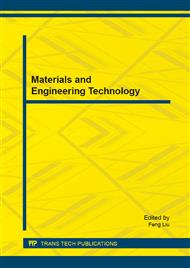p.784
p.791
p.798
p.805
p.812
p.818
p.826
p.833
p.837
A Distributed Motion Algorithm for Mobile Sensor in Hybrid Wireless Sensor Networks
Abstract:
Constructing a hybrid wireless sensor networks comprising a mix of static sensors and mobile sensors can achieve a balance between improving coverage and reducing the cost of the network. In order to achieve high network coverage, mobile sensor move from a small to a big size of coverage hole in the hybrid wireless sensor networks. Due to the energy of the mobile sensor is limited, how to reduce the moving distance of the mobile sensor and reduce the energy consumption in the process of moving is a very important issue. This paper proposes a distributed minimum cost matching algorithm (DMMA) to redeploy mobile sensor, which can make the level of network coverage to meet the requirement of the environment, while effectively reducing the number of sensors. In our method, static sensors detect coverage hole by Voronoi diagrams, coverage holing sensors and mobile sensors by using DMMA to excellently heal the large coverage holes. Simulation results show that our method can effectively improve the coverage rate of the WSNs, while save the energy of mobile sensors.
Info:
Periodical:
Pages:
812-817
Citation:
Online since:
January 2015
Authors:
Keywords:
Price:
Сopyright:
© 2015 Trans Tech Publications Ltd. All Rights Reserved
Share:
Citation:


